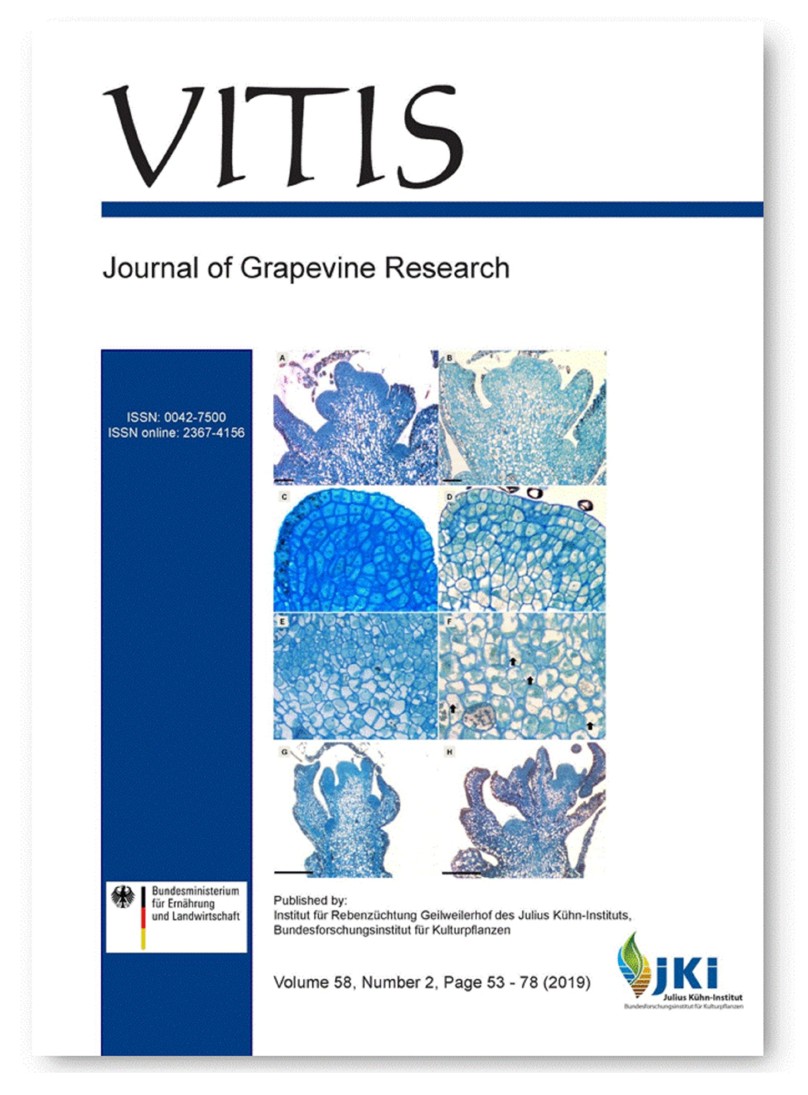An inventory of the relic Eurasian wild grapevine populational nuclei in Huelva province (Andalusia, Spain)
DOI:
https://doi.org/10.5073/vitis.2019.58.53-57Keywords:
ampelography; ecology; genetic diversity; threatened phytogenetic resource; Vitis vinifera L. subsp. sylvestris (Gmelin) Hegi.Abstract
This paper is focused on 21 relic wild grapevine populations within Huelva province (SW Europe, Spain) prospected between 2015-2017. Position of each population along river-bank forests, types of flower of this dioecious subspecies and morphology of the pollen grains were described. Analyses of five microvinifications were carried out, which indicate that the color intensity of the wines is between 14.6 and 17.6 and the pH between 3.26-3.27, which are suitable values for red wines under Mediterranean climatology. A list of the accompanying vegetation and the cultivated varieties in the "Condado de Huelva" Registered Appellation Origin Mark were also included. Moreover, the genetic diversity of 23 vines was characterized using 25 nuclear SSR loci, the results showed a slightly higher diversity than the one found in Iberian cultivars. However, the observed heterozygosity was significantly lower than the expected one for wild populations in the Huelva province. The inbreeding depression in these wild grape populations is suggested by the positive F values. Therefore, the conservation of this unique germplasm collection should be part of the process of maintaining the genetic diversity in this gene pool, especially, taking into account that no particular legal figure of preservation exists in Spain.
Downloads
Published
Issue
Section
License
The content of VITIS is published under a Creative Commons Attribution 4.0 license. Any user is free to share and adapt (remix, transform, build upon) the content as long as the original publication is attributed (authors, title, year, journal, issue, pages) and any changes to the original are clearly labeled. We do not prohibit or charge a fee for reuse of published content. The use of general descriptive names, trade names, trademarks, and so forth in any publication herein, even if not specifically indicated, does not imply that these names are not protected by the relevant laws and regulations. The submitting author agrees to these terms on behalf of all co-authors when submitting a manuscript. Please be aware that this license cannot be revoked. All authors retain the copyright on their work and are able to enter into separate, additional contractual arrangements.



